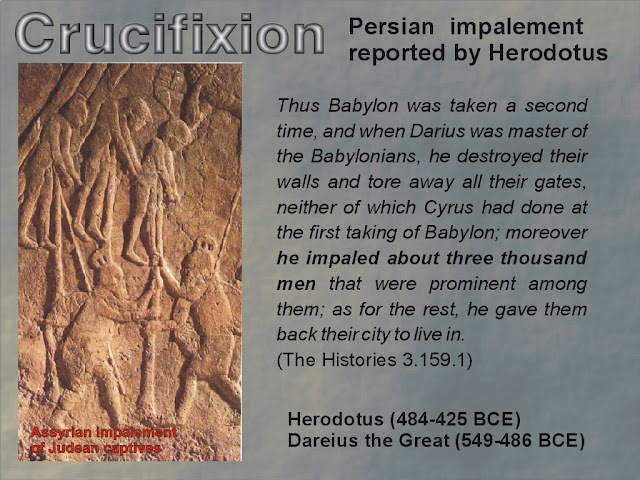 |
| This simple sentence covers great personal tragedy as well as tragedy of civilization seduced to terrorize its members into obedience. |
 |
Based
on archeological records as well as testimonies, aggression, brutality
and violence have always been part of human nature and are well
documented in primitive societies. Nevertheless only the emergence of
large empires saw the development of brutality and violence into a
complex calculated system. Large empires used violence and fear of
violence as an important tool to control and govern large territories
with diverse populations. The Neoassyrian Empire can serve as one of the early and extreme examples of the systemic use of state terrorism for the purpose of governance.
|
 |
Assyrian depictions of hunting scenes
or battle scenes were extremely realistic and also brutal. Accounts of
their form of governance were built on fear and terror. Anything
interpreted as disloyalty was severely punished.
|
 |
| In this lecture I also use well-known pieces of art. Here Mark Chagall depicts and prophetically anticipates the upcoming unspeakable persecution of Jews in the Ukraine and Western Russia. |
 |
| Report of the Seleucid persecution under Antiochus Epiphanes. |
 |
| Here is an biblical example, where David is implicated in reverting to this hideous practice. And the highlighted gloss tries to explain and also shift responsibility on outsiders. Although certain features of the story seem to be quite old, the crucifixion points to the Persian, perhaps even Hellenistic period of the authorship of the saga of the unified monarchy of David and Solomon (As text-critically suggested by John Van Seters and from the perspective of Near Eastern Archeology by Israel Finkelstein and Neil Asher Silberman. |









No comments:
Post a Comment